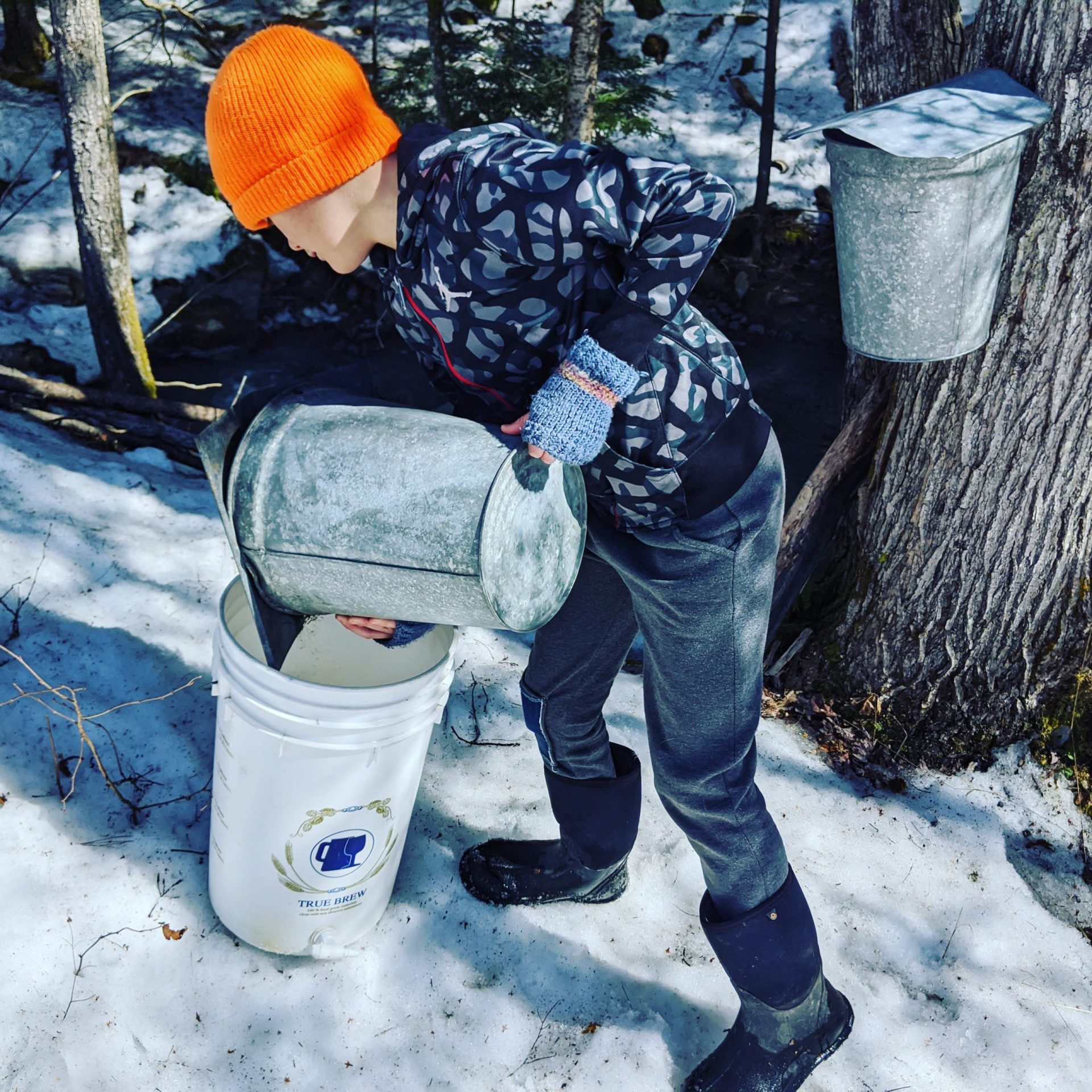Welcome to Maple School, our series on things you can learn through maple syrup. Today: The Math of Tapping a Maple Tree!
You can learn many things about math through learning about how to make maple syrupa Among them are the concept of ratios, working with fractions, discovering new units of measure, and practicing addition, subtraction, division, multiplication and estimation.
We’ve taken the process of making maple syrup and paused at some opportunities to do math! Our first stop is the math of tapping a maple tree. We hope you enjoy it, and learn something!
How big does a maple have to be to tap it?
All kinds of maple trees can be tapped to make maple syrup, but only if they are mature and healthy enough to recover from the wound. You can see if a tree is healthy by looking at it. But you have to measure a tree to understand its maturity: the larger the trunk, the older the tree. If the diameter of a maple tree is at least 10 inches, you can put one tap in it. If the diameter is 18 inches or more, you can tap it twice.
Diameter
What is the diameter of a tree? Imagine taking a slice of a tree trunk that creates a perfect circle. Or imagine looking down at the circle of a stump after a tree has been cut down. The diameter of that tree trunk is the length a line would be if you drew a line from the bark on one side of the trunk through the exact center of the circle and then through the bark on the other side of the trunk.
Fortunately for your pancakes, there are ways to determine diameter without cutting down the tree! Professionals who work with trees can measure diameter with a tree caliper – a big ruler with a big clamp for reaching the outside of a tree trunk.
But you can estimate diameter the same way by holding a yardstick up to the trunk of a tree at your eye level and just imagining! Imagine what the length of a line that would pass through the center of a tree would look like, where it would start, and where it would finish. The line would represent the thickest way to see the trunk from where you are standing – bark to bark. Hold your yardstick up and squint a bit. What is the length of the space taken up by that bark? That’s the tree’s diameter!
Circumference
Finally, you can calculate diameter using circumference and math! Circumference is the distance around the tree trunk; it can be measured by wrapping a measuring tape around the trunk (or by measuring a rope after it’s been wrapped around the trunk). Once you have measured the circumference of your tree, divide by 3.14 (a special number called pi) and you have diameter! Pi describes the relationship between the circumference and diameter of a circle perfectly, every time! Isn’t that amazing?
Now that you know how to tell if a maple tree is mature enough to handle one or two taps, get outside and take some measurements! Now—using addition, multiplication or both—you can figure out how many total taps you can have in your trees!
To learn more about measuring trees, read more here.

